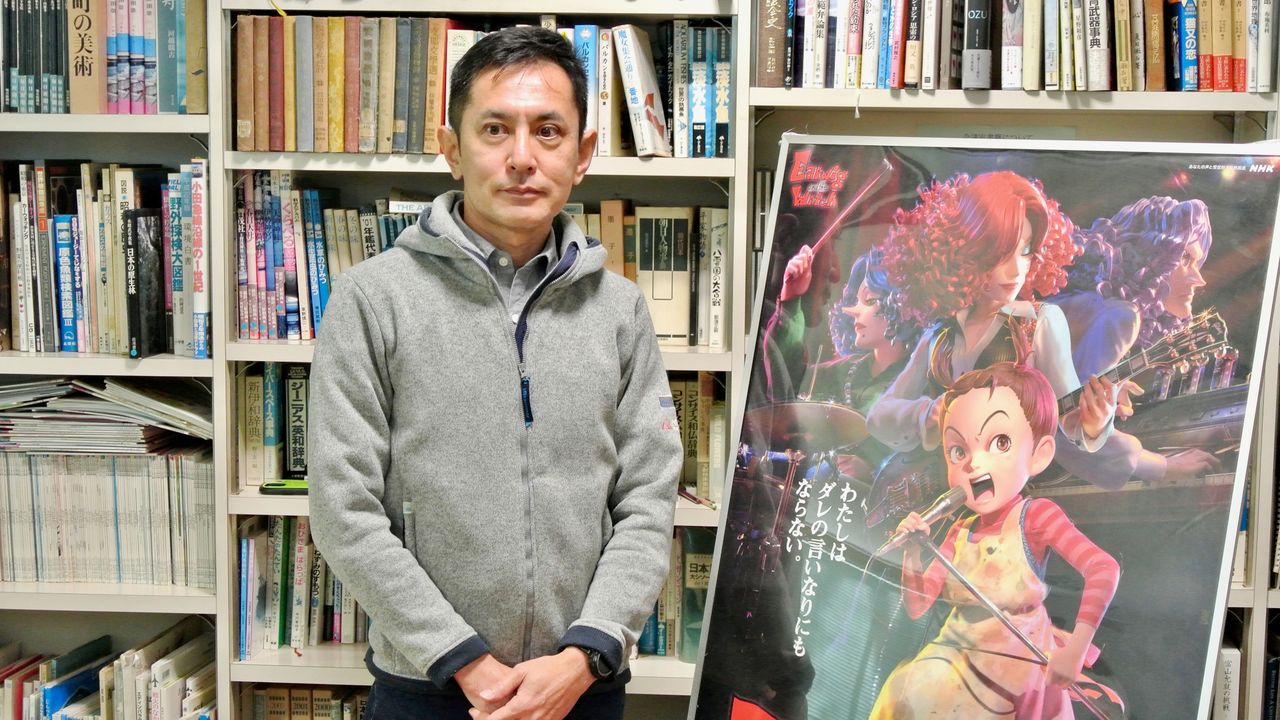
Ghibli Rebooted: Studio Goes 3D for New Movie “Earwig and the Witch”
Culture Cinema Anime- English
- 日本語
- 简体字
- 繁體字
- Français
- Español
- العربية
- Русский
Studio Ghibli is all set to release its first new film in four years. Āya to majo (Earwig and the Witch) is directed by Miyazaki Gorō, the son of the celebrated Ghibli director Miyazaki Hayao. It is the studio’s first full-length fully computerized 3D animation, and in another unprecedented move, will bypass theaters to make its debut on terrestrial television in Japan with a December 30 broadcast on NHK’s General channel.
The studio’s previous feature, The Red Turtle, was an international coproduction with a strong artistic flavor. One needs to go back to Omoide no Mānī (When Marnie Was There) in 2014 for a classic Ghibli box office hit, so many fans will await the new release with great anticipation.
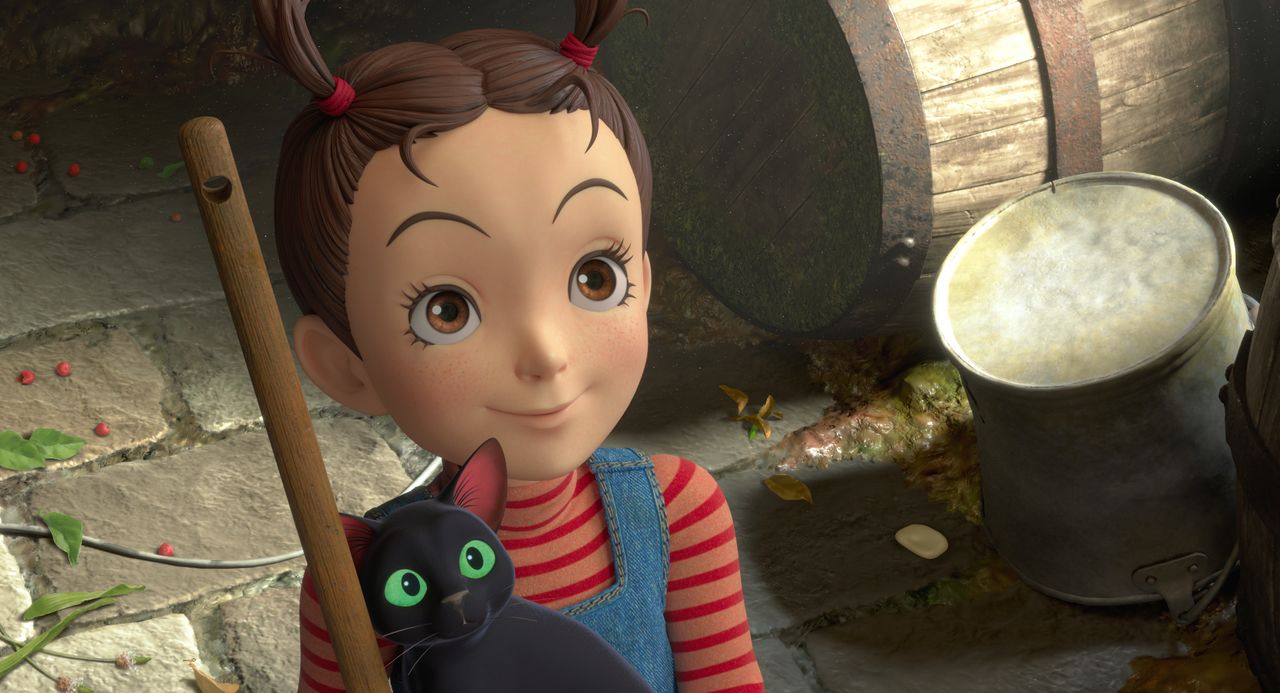
Earwig (Āya) in Earwig and the Witch. (© 2020 NHK, NEP, Studio Ghibli)
When Miyazaki Hayao announced his retirement in 2013—prematurely, as it turned out—for a time Studio Ghibli decided it would not make any more films. What changed between then and this year’s Āya to majo (Earwig and the Witch)? And where is the studio headed now? We talked to producer Suzuki Toshio and director Miyazaki Gorō about these questions and what is happening with Kimitachi wa dō ikiru ka (How Do You Live?), the film Miyazaki Hayao shelved his retirement plans to work on.
Father and Son
The initial impetus for the new film came when Miyazaki Hayao read the book Earwig and the Witch by Diana Wynne Jones, the author of Howl’s Moving Castle, which he previously adapted for Ghibli.
A girl called Earwig, raised in an orphanage, is one day adopted into a witch’s family. She is driven hard, performing chores until she can take no more, and joins forces with a black cat called Thomas to fight back against the witch.
Miyazaki enjoyed how Earwig wrapped adults around her little finger, and suggested the idea of an adaptation to Suzuki.
“Miya [Miyazaki Hayao] was already planning How Do You Live? and couldn’t decide which of the two to choose,” Suzuki says. “When he asked me my opinion, I said we should go with How Do You Live? But Earwig was also entertaining, and suited to our times, so we decided that Gorō should do it.”
Miyazaki Gorō had already seen the book of Earwig and the Witch on the table when he went to talk to the two older men about another matter, and he realized something was up. He soon read it and started pondering how to adapt it as a film.
Since Gorō’s 2006 debut Gedo senki (Tales from Earthsea), his father has always been involved in the planning of his films. With both working as directors in the same company, Gorō has sometimes been seen as riding on his father’s coattails. It is hard to imagine the scale of the pressure and difficulties he has faced, and Suzuki says that Hayao often speaks out and gets involved in Gorō’s work, which can lead to blazing rows between father and son. For the new film, too, Hayao regularly came to discuss the themes of the story in the early stages.
Gorō said that his father talked about how children surpass adults, and how Earwig manipulated the people around her. However, as Gorō continued to work on the storyboards, he developed his own views of Earwig and what the narrative was about.
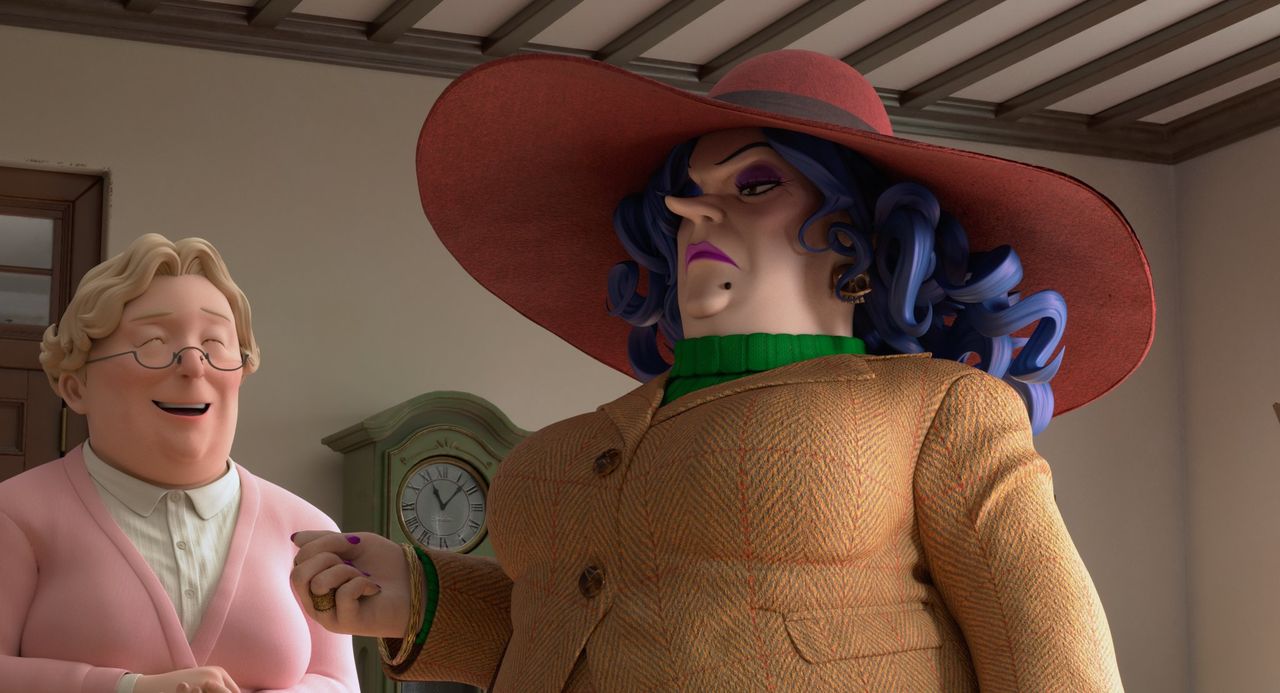
Bella Yaga, at right, arrives to take Earwig off to her new home and magical training. (© 2020 NHK, NEP, Studio Ghibli)
On reading the English original, he decided that “manipulate” was too negative a word and not really the best way to describe what Earwig was doing. “I felt Earwig had a toughness that she needed to survive. When things didn’t go her way or she faced some obstacle, she didn’t just quietly accept it. Instead, she thought about how to get around the situation. She looked for handholds, clambered her way up, made openings, and deployed all her skills to make any upward progress she could. Then somehow, she reached a place where she could take a breath. This was the most important part for me.”
Thinking these were also skills needed by children today, Gorō landed on his own analysis of the work’s themes.
Gorō and Earwig
“There used to be more children in Japan, so they’d gather together in their neighborhood and live in their own world,” Gorō says. “But now there are not so many, so it’s like they’re living in a corner of the adult world. They need to deal with adults to get by.
“In that sense, their situation is the same as Earwig’s. To get adults to do what they want, they may act cute or try out some gambit. To protect themselves, they make thorough preparations before they act. I thought I’d tell the story of that kind of child.”
This sounds like Gorō sees something of himself in Earwig, as he has had to struggle, stuck between his maestro father and the renowned producer Suzuki.
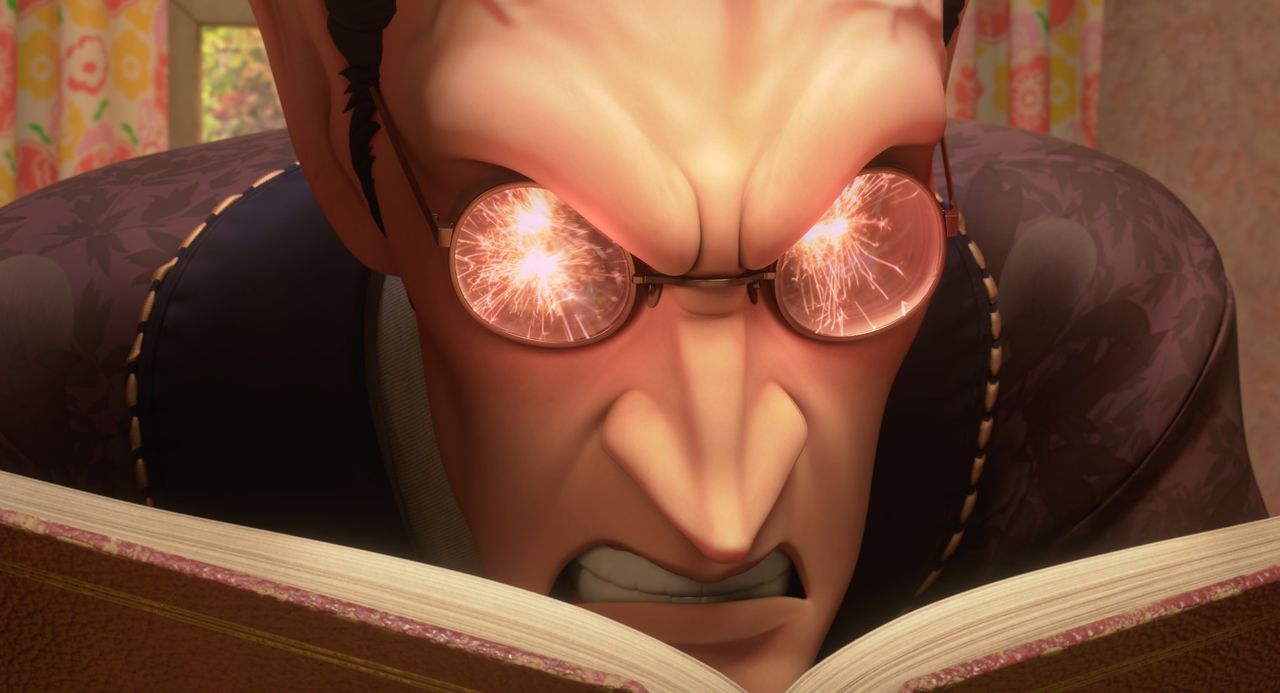
Earwig and the Witch. (© 2020 NHK, NEP, Studio Ghibli)
Suzuki said he has noticed this himself. “My initial tagline for the film was ‘I don’t follow anyone’s rules.’ In a way, Earwig is an awful child who leads adults around by the nose. But Miya is a bit like that too. And when Gorō took a shine to Earwig as well, it made me think about the similarities between father and son. Because Gorō is also like Earwig.
“He must have felt some discontent with his dad, and found me annoying too. But this time he’s been able to cut loose and make a film the way he wanted to, because he was making it about himself. He’s been confident—and as a result, I think it’s his best work by far.”
Trying Something New
Miyazaki Gorō’s previous films were made to a high level of technical quality. Based on his experience as a construction consultant, he was first hastily called up to the studio to assist with the design of the Ghibli Museum. Despite his lack of a background in cinema, he was then picked out to direct Tales from Earthsea. This was the most popular domestic movie of the year in Japan, grossing ¥7.7 billion. His second film, Kokurikozaka kara (From Up on Poppy Hill), was the biggest domestic hit in Japan for 2011, with a box-office take of ¥4.5 billion.
Without Ghibli’s brand power and outstanding staff, this would not have been possible. Yet the great reputation of the studio and corresponding expectations have led to Gorō’s works appearing unpolished. They seem too closely tied to assumptions of what a Ghibli film should be.
Earwig and the Witch dispels such feelings completely. From the opening action scene, the difference is crystal clear. With 3D CG animation that at times rivals Pixar’s, the characters are lively and move at a nimble pace. The music incorporates the director’s tastes in 1970s British rock, and there is a band performance scene at one point.
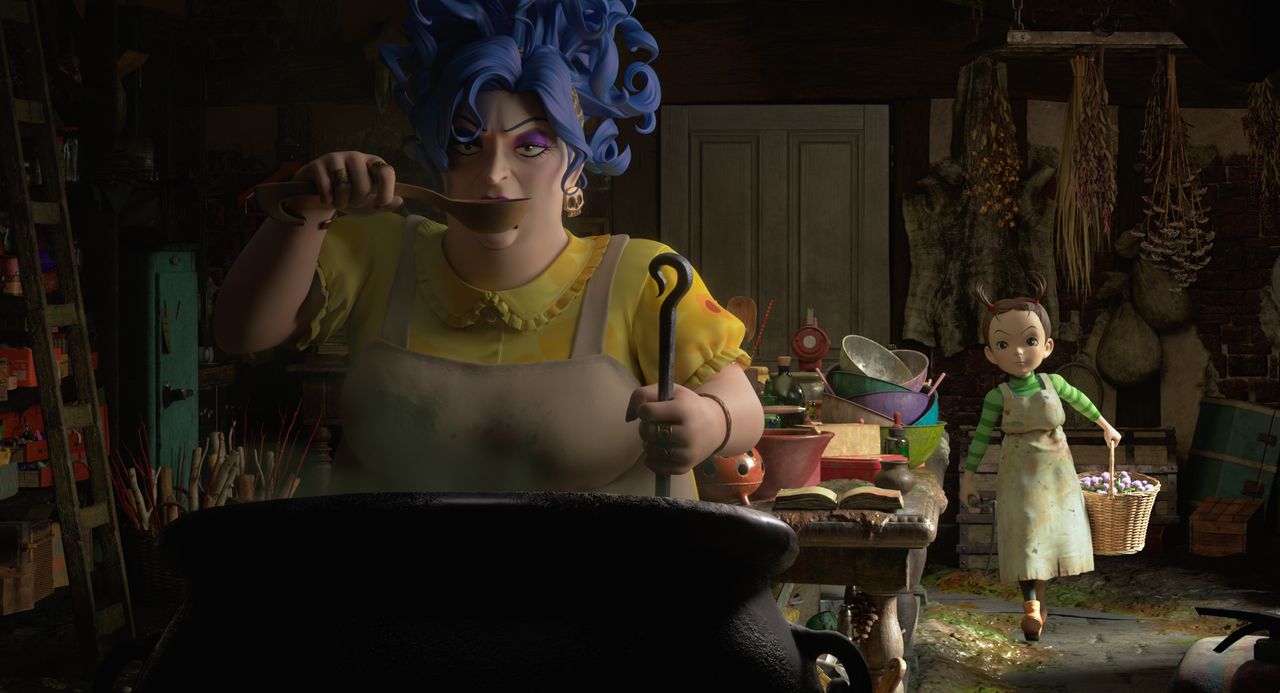
Earwig serves Bella Yaga at her new home. (© 2020 NHK, NEP, Studio Ghibli)
As it is based on a children’s book about a witch, this is a classic work in one sense. Yet the underlying theme and ingenious approach to the animation and music allow the film to succeed in bringing something fresh to Ghibli.
“I thought that Ghibli needed to try something new,” Gorō says. “Suzuki Toshio set up Studio Ghibli so that Miyazaki Hayao could make films. Basically, it belongs to them.” As his father will soon be 80 and Suzuki is 72, however, they will not be working there forever.
He does not think he should try and do what Miyazaki, Suzuki, and Takahata Isao have done, as that would only mean producing a diminished version of their originals. “If the studio is going to continue, we have to be ready to take on new challenges.” Although he does not state it directly, it sounds like he sees himself as the successor to the studio, with a firm desire to make new strides with his next work.
“Personally, I’d like us to build on what we’ve done with Earwig. There must be lots of people who want to work on a full CG animation feature, but have never had the opportunity. If they know that Ghibli has started on CG, we’ll be able to get more people interested, and if we get them working to their potential, we’ll come up with something better next time. So I think it’s important for us to keep going with hand-drawn and CG at the same time.”
Big Change in the Industry
A willingness to try new approaches can be seen in the decision to broadcast first on television. Suzuki explained why the studio chose to go against all previous common practice. “The film industry has changed greatly in the past few years. There’s a lack of projects and a lot of similar movies, while the industry itself is shrinking. In these circumstances, we thought it would be difficult to drum up interest if we suddenly released Earwig and the Witch.
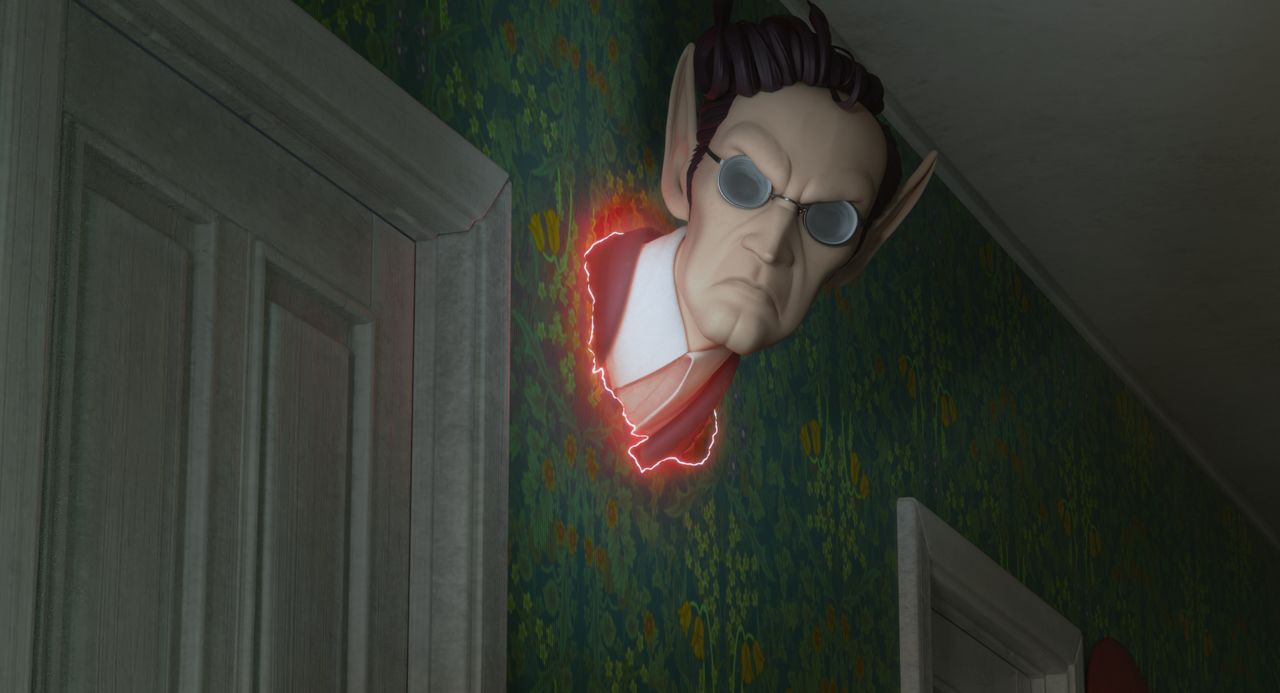
The mysterious Mandrake makes an appearance. (© 2020 NHK, NEP, Studio Ghibli)
“For a long time, people were in the habit of watching films at the movie theater, but there are more ways to watch now. You have television, DVDs, and streaming. I don’t see it as negative that these extra options are out there. But taking the situation on board, we decided to see what kind of reaction we’d get from a TV release. We figured it was worth doing as an experiment.”
Gorō is also positive about the television debut. “Speaking as one of the people who made the movie, I think this will allow more people the chance to watch it. We don’t feel we’re finished when the film’s complete, as we want people to watch it and say they enjoyed it. In that sense, the TV release is a good opportunity.”
No Deadline for How Do You Live?
While Gorō strikes out for the new frontiers of 3D CG, his father Hayao continues work on the hand-drawn How Do You Live? Fans are starting to wonder when they will get the chance to see it.
To date, many of his films have needed two years to create, but How Do You Live? has already taken more than three. As it is likely to be the master’s last work, Suzuki made the unusual choice not to impose a deadline. “I want him to keep going until he’s happy with it, rather than being tied down by a deadline.” Takahata’s final film, Kaguya-hime no monogatari (The Tale of the Princess Kaguya), needed eight years, and this might also be the case for How Do You Live?
“The film is now half-finished,” Suzuki said. “Including the opening and end credits, the full feature will be 125 minutes. At first, the production pace was one minute a month, so I thought it might end up taking 10 years, but it’s moving more quickly now. Still, it will likely need another three years to finish the second half.”
There was some concern about the influence of the COVID-19 pandemic, with remote working on the animation introducing delays.
“I’ve learned about Japanese people through this situation,” Suzuki says. “We thought productivity would decrease due to working from home, but it’s actually gone up. In the studio, people are looking around them as they work, and this is a cause of reduced efficiency. But if you set quotas, and have people work individually, it raises efficiency because they don’t want to get left behind. Through observing this, I rediscovered the serious and diligent aspects of the Japanese,” he laughs.
The Future of Ghibli
Earwig and the Witch signals a new chapter for Studio Ghibli, while How Do You Live? will likely complete the fantasy universe of Miyazaki Hayao. And while there is no confirmation of the story or director, the studio is already making plans for the next film to follow How Do You Live?
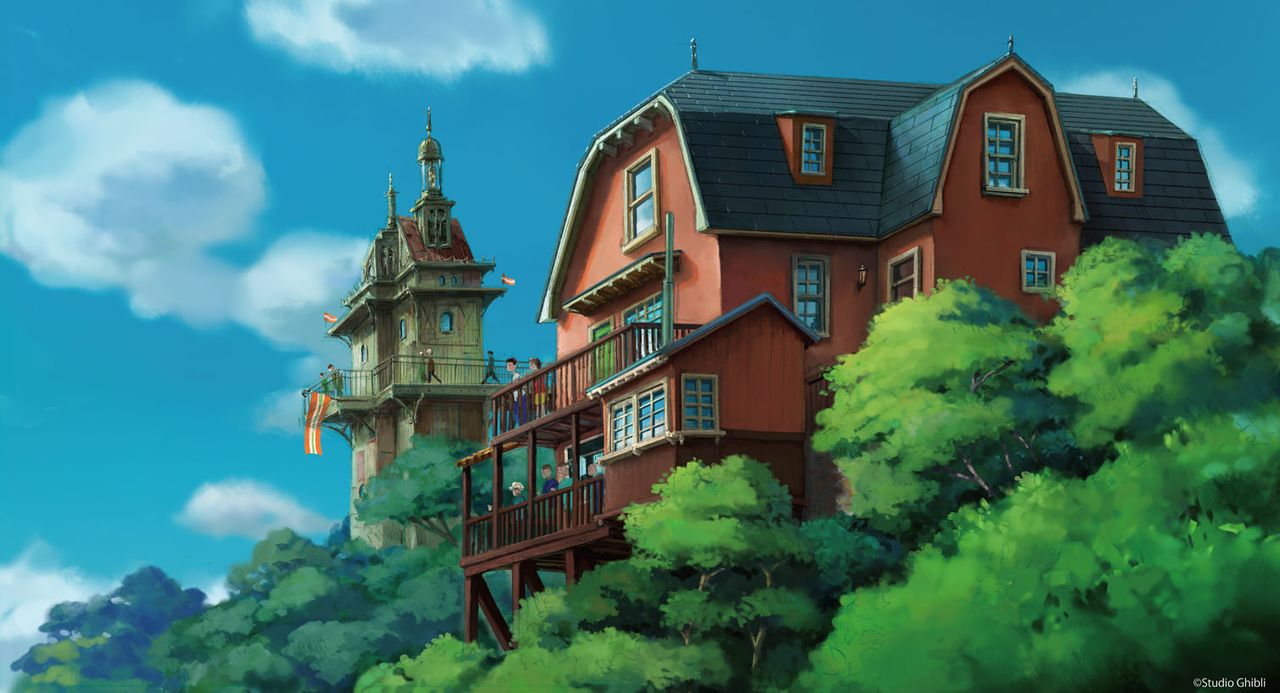
An artist’s concept of the Seishun no Oka (Hill of Youth) area in Ghibli Park. (© Studio Ghibli)
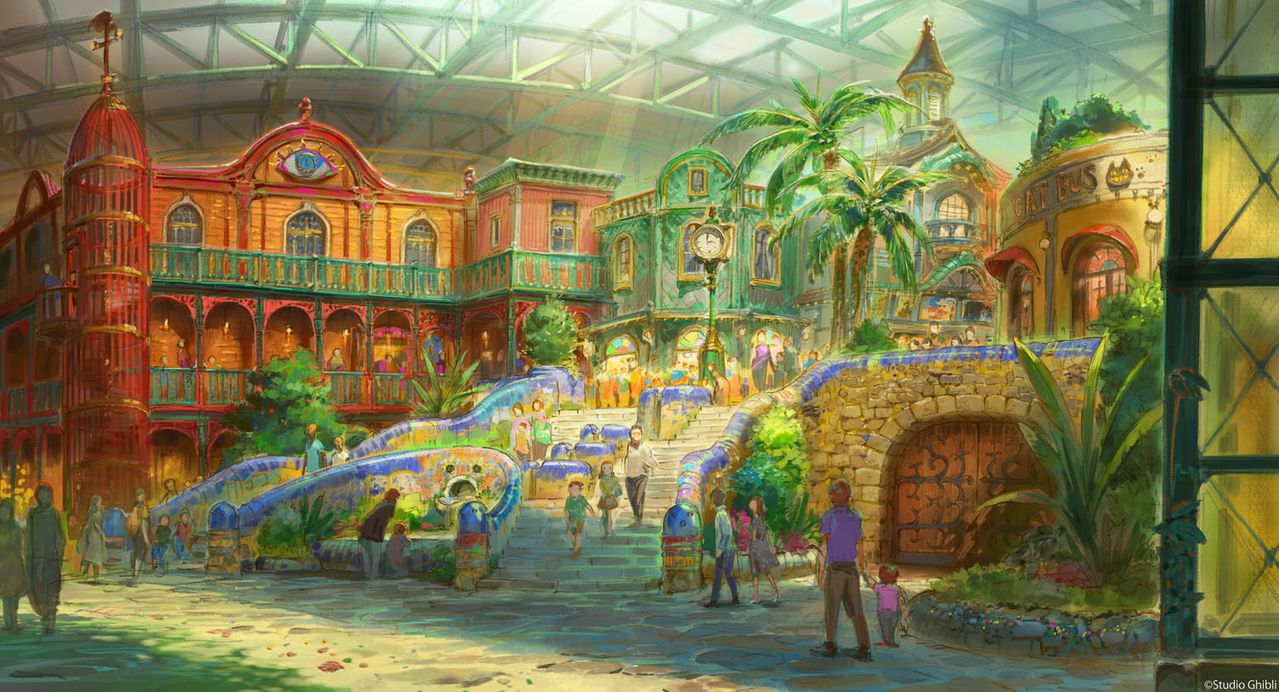
An artist’s concept of the Daisōko (Warehouse) area in Ghibli Park. (© Studio Ghibli)
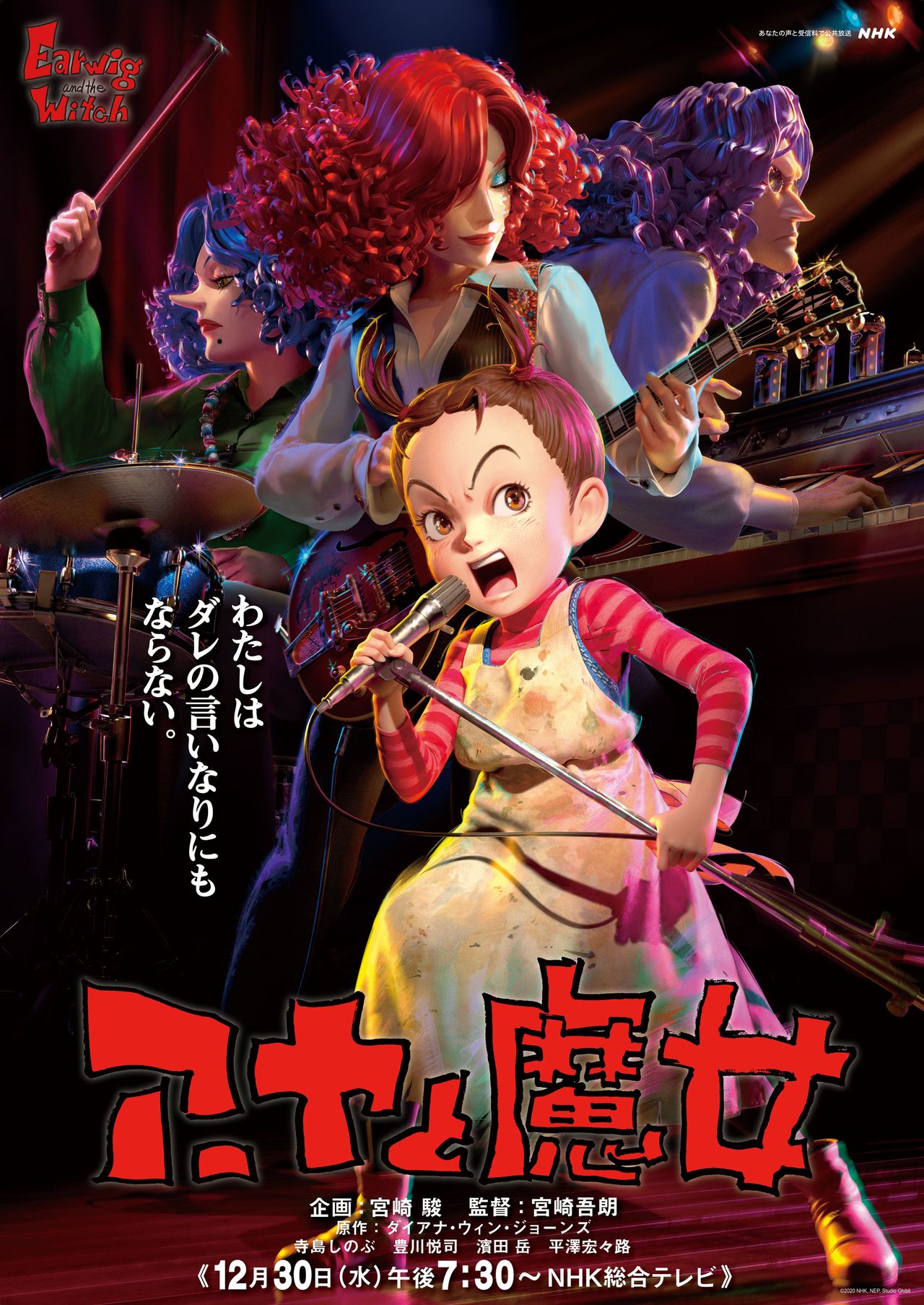
An Earwig and the Witch poster. (© 2020 NHK, NEP, Studio Ghibli)
Construction of Ghibli Park has also begun on the former site of Expo 2005 in the city of Nagakute to the east of Nagoya, Aichi Prefecture. It is scheduled to open in the autumn of 2022. Rather than a traditional theme park with an array of mechanical attractions, the concept is an arrangement of facilities where visitors can experience the world of Ghibli films within a park with plenty of green space. Miyazaki Gorō has been at the center of the design process, but Suzuki said that his father could not simply look on without saying anything, and has suggested many ideas.
Studio Ghibli once shut down its production division, but it is now starting to fire on all cylinders again. Having produced a series of hits over 35 years as a leading light of Japanese cinema, it is regrouping to face the future. We may see a second golden age for one of the world’s most distinctive animation studios.
(Originally published in Japanese on December 11, 2020. Banner photo: Miyzaki Gorō stands next to an Earwig and the Witch poster. Courtesy Yanagibashi Kan.)